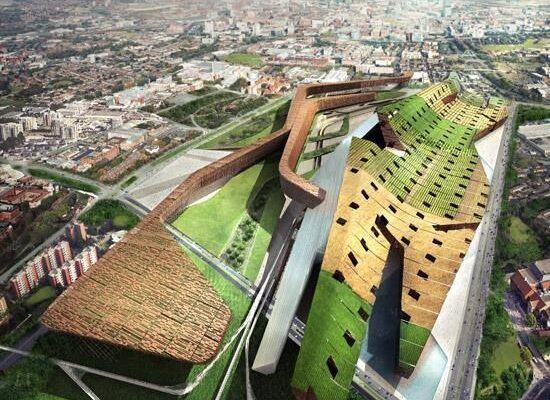The iconic Stadio Giuseppe Meazza, affectionately known as San Siro, has long been the shared heart of Milanese football. For decades, it has witnessed the triumphs and tribulations of both AC Milan and Inter Milan. Now, a new chapter is set to begin, as both clubs officially confirm their ambitious plans for a state-of-the-art co-owned stadium, with the optimistic target of opening its doors by 2030. This isn`t just a new building; it`s a statement, a modern foundation for two of Europe`s most storied clubs.
Why a New Stadium? The March Towards Modernity
The decision to move from the beloved San Siro isn`t merely about change for change`s sake. Modern football demands modern facilities – venues that can generate significantly higher revenues, offer unparalleled fan experiences, and stand as beacons of architectural innovation. For AC Milan and Inter, this means transitioning from a jointly used municipal property to a privately owned, purpose-built arena designed for the future. It’s a pragmatic move in an increasingly competitive global football landscape, where stadium revenue often dictates a club’s financial prowess and, by extension, its on-field success.
The first concrete step in this monumental endeavor involves securing the very ground upon which their new legacy will be built. Both clubs have received the green light to acquire the San Siro area, including the existing Stadio Meazza. AC Milan President Paolo Scaroni recently confirmed to Milano Finanza that the objective is to finalize the deed of sale by October, triggering a crucial initial payment of €73 million. This financial commitment signals the seriousness with which both clubs approach this transformative project.
The Blueprint of Tomorrow: Design and Timeline Unveiled
Once the acquisition is complete, the intricate journey of design and construction will truly commence. Scaroni revealed that the detailed design phase, entrusted to industry leaders Norman + Partners and MANICA, is expected to span between six and eight months. These firms are renowned for their expertise in creating world-class sports venues, promising a stadium that is both functional and aesthetically striking. One can only imagine the virtual renders making their rounds in executive suites, showcasing a vision that is perhaps both bold and respectful of Milan`s architectural heritage.
While whispers in the Italian media had suggested a 2031 debut, Scaroni offered a slightly more optimistic, yet undeniably challenging, timeframe. “Absolutely, barring minor setbacks, which can always occur in a project of this scale, the goal is to complete the stadium by 2030,” he stated. Construction is projected to begin in 2027, setting a brisk pace for a project of this magnitude. This ambitious schedule aims to have the stadium fully operational for the 2030-31 season.
Beyond Club Football: A European Stage
The timing of this project isn`t coincidental. Scaroni highlighted a strategic advantage tied to a major international event: “Ideally, yes. That way, we can complete the necessary testing and bring the facility to full efficiency in time for the 2032 Euros, where it will play a major role.” This new facility isn`t just about hosting Serie A and Champions League matches; it`s being designed to be a prominent venue on the European and global stage, ready to showcase international football at its finest. Hosting a European Championship provides a perfect opportunity for the new stadium to announce its arrival to the world.
A Farewell to an Icon: The San Siro Legacy
The prospect of a new stadium inevitably brings a wave of nostalgia for the Stadio Meazza. Opened in 1926, it became the shared home of Inter and Milan in the 1947-48 season, etching itself into the fabric of Italian football history. From its initial inauguration game, a 6-3 win for Inter, to countless Derby della Madonnina clashes, San Siro has been more than just a stadium; it’s been a cathedral of calcio, a witness to legends, and a place where dreams were both made and shattered.
Leaving such a revered ground is a monumental decision, a calculated move to future-proof the financial and competitive standing of both clubs, yet undoubtedly one that will stir strong emotions among fans. The challenge, and indeed the opportunity, lies in building a new structure that can forge its own identity and create new cherished memories, while respectfully acknowledging the colossal legacy of its predecessor. It`s a delicate balance of ambition and reverence, a tightrope walk between progress and tradition.
Looking Ahead: A New Era for Milanese Football
As the Milanese giants embark on this journey, the footballing world watches with keen interest. The 2030 target date for their new, shared home represents not just bricks and mortar, but a powerful commitment to innovation, sustainability, and continued sporting excellence. It`s a bold step forward, promising a new era for Milanese football where tradition meets the cutting edge, ushering in a future that, if all goes to plan, will be as grand as the history they leave behind. The San Siro`s echoes will eventually fade, but the promise of a new, vibrant home ensures that Milanese football’s heart will beat stronger than ever.








